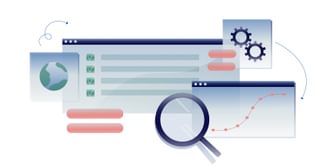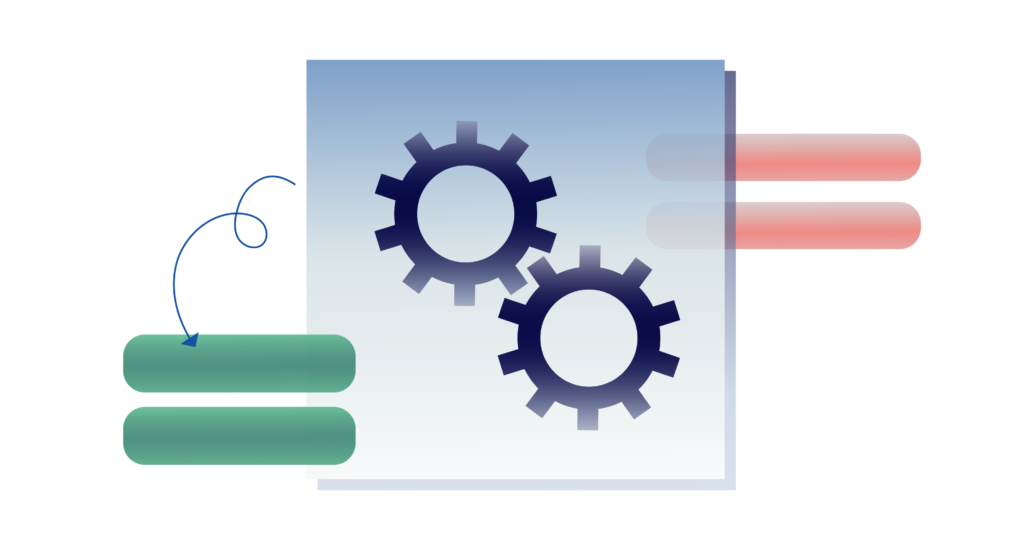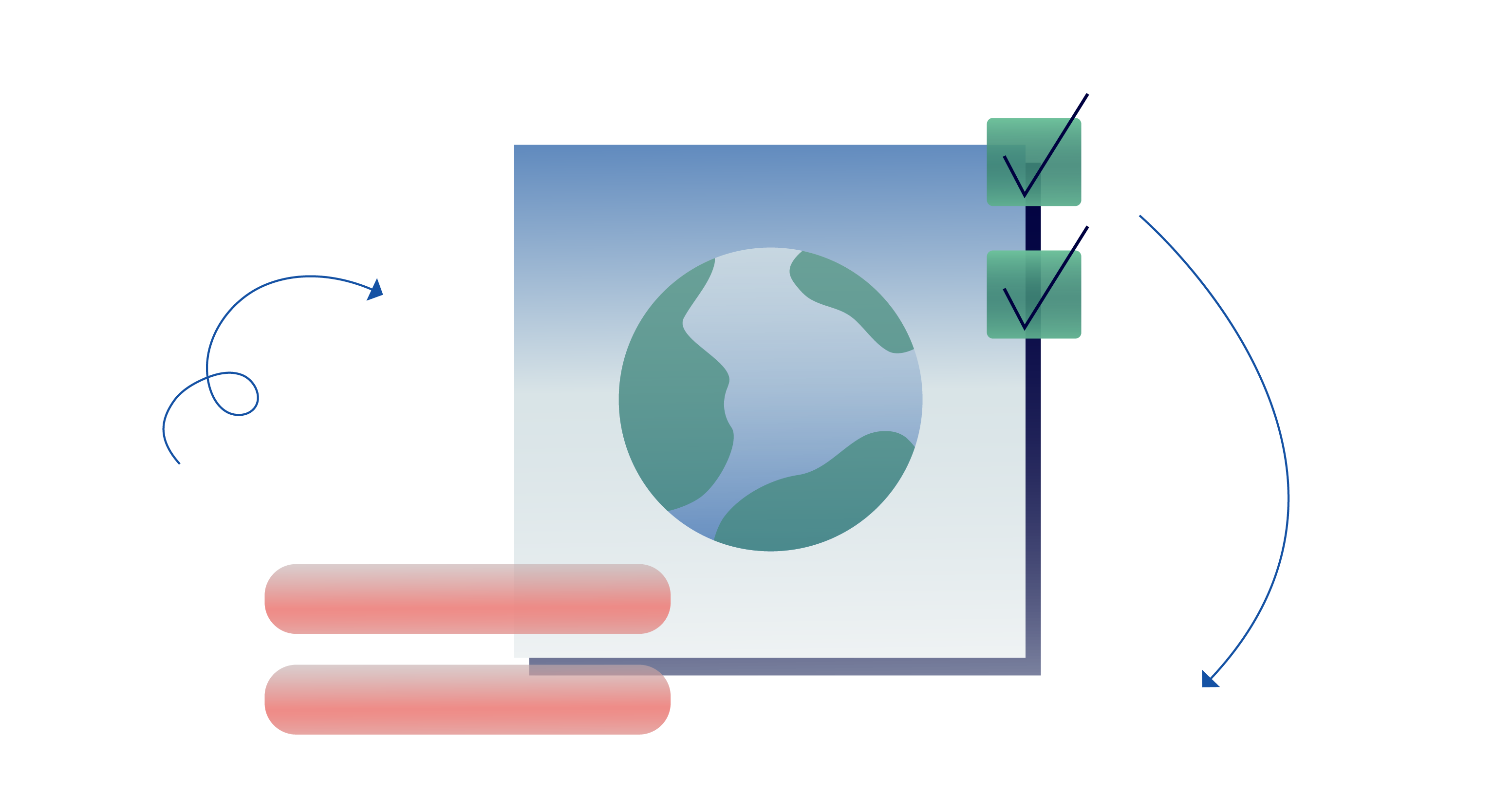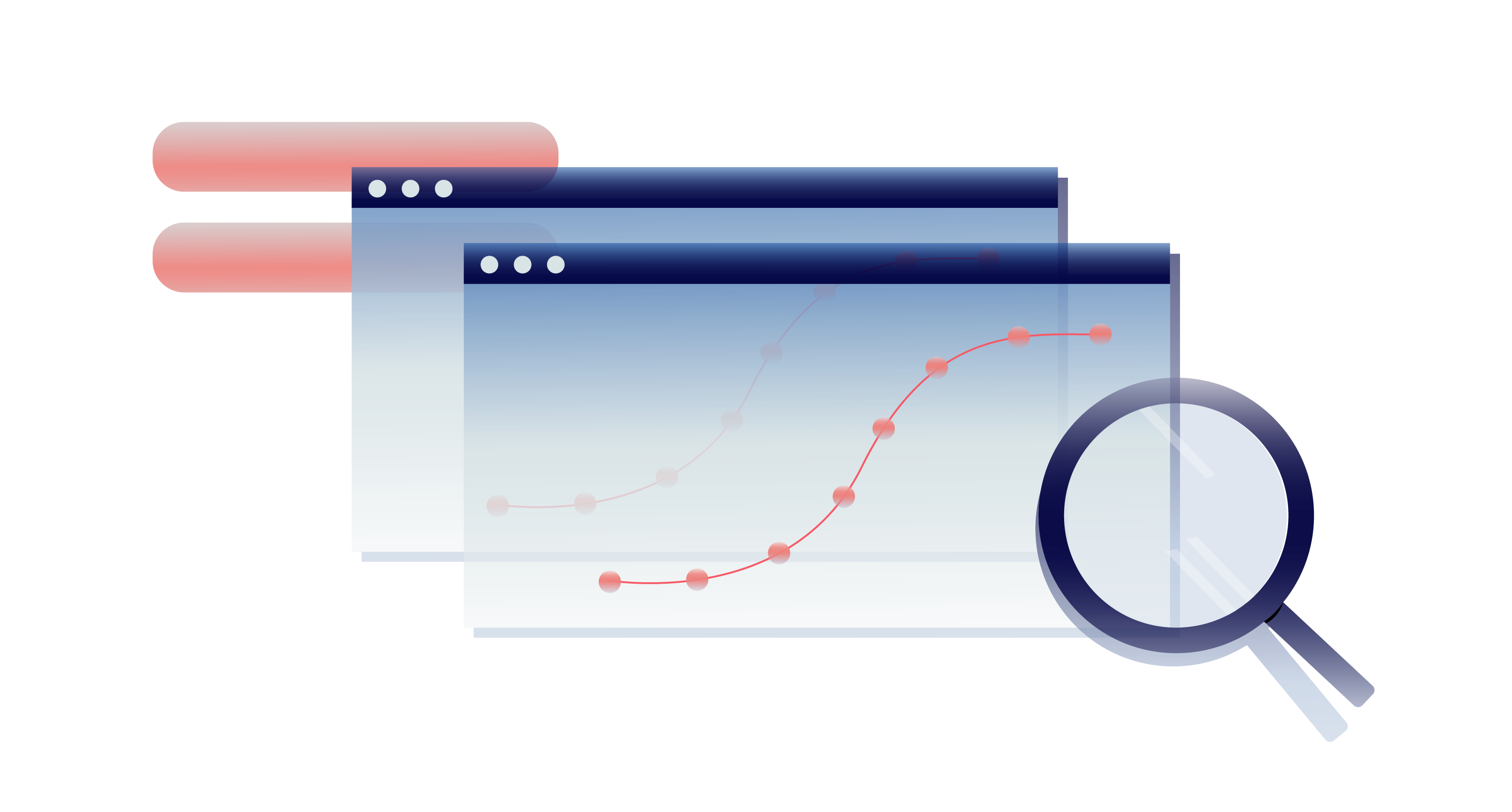
The reporting revolution is propelling forward, but is your ESG lexicon expanding in tandem? This post will bring you up to speed through a demystification of the term ESG data management software and its role in the reporting process. In this vein, we’ll take a closer look at the concept of ESG data and its importance in driving sustainable business practices. Lastly, we’ll provide guidance on how to go about selecting the best ESG data management solution for your organization.

ESG data management—a rapidly changing landscape
In today's rapidly changing regulatory landscape, Environmental, Social, and Governance (ESG) factors have become increasingly vital for organizations across industries. ESG encompasses a wide range of issues, including climate change, diversity and inclusion, labor practices, data privacy, and more. As organizations acknowledge the importance of sustainable and responsible practices—and strive to do better—the need for effective ESG data management software has emerged as a critical component of their corporate strategies.
Notwithstanding the global momentum around corporate sustainability—and the growing adoption of ESG technologies—our industry is awash with confusing terms. What is ESG data? What does ESG data management software encompass? What do we mean by ESG data management, and how is it connected to corporate sustainability? And, lastly: how do organizations determine which ESG reporting platform is best suited for them?
This post will address all of the above, but first, let’s look at some basic definitions.
Definition #1: What is ESG data?
First, it's essential to grasp the essence of ESG data and the array of sustainability activities it represents. Let’s look at each major component:
- Environmental data focuses on an organization's impact on the natural world, such as its energy consumption, waste management, water conservation, and carbon emissions.
- Social data encompasses areas like diversity and inclusion, human rights, Indigenous reconciliation, and health and safety.
- Governance data pertains to corporate leadership, executive pay, board composition, business ethics, bribery and corruption, to name a few. According to the World Economic Forum, governance is foundational, as it supports the realization of environmental and social performance on the whole.
If you’d like to more general information on ESG, we invite you to explore our article “Irwin x Novisto: A practical guide to understanding ESG.”
Ultimately, understanding and effectively managing the broad spectrum of ESG data is crucial for organizations seeking to demonstrate their commitment to sustainability. However, given the volume, complexity, and diversity of ESG data sources, manual handling has become increasingly burdensome and error-prone. This is especially pronounced for global enterprises who need to capture large banks of relevant data across many cross-functional teams and time zones. Moreover, limited (or absent) verification and validation processes make it hard to confirm data accuracy, which can erode stakeholder confidence. The challenges of ESG reporting are real—and recurrent—with tangible risks to reputational capital.
Consequently, organizations are increasingly looking for novel solutions to help them better manage their data. But what exactly do we mean by solutions?
This is where ESG data management software comes into play.
Definition #2: What is ESG data management software?
ESG data management software refers to a specialized digital tool that’s designed to collect, organize, analyze, and report ESG data in a streamlined and efficient manner. This enables organizations to consolidate data from various sources, identify trends, measure performance, and generate comprehensive reports for internal stakeholders, investors, regulators, and the wider public. By automating these processes, ESG data management software empowers organizations to enhance their decision-making, improve transparency, and foster a culture of sustainability.
It’s important to keep in mind that the term ESG data management software is often used interchangeably with a plethora of other terms, including:
- ESG reporting tool
- ESG platform
- ESG data management platform
- ESG data management system
- ESG reporting software
- ESG reporting platform
- ESG tracking software
- ESG compliance software
- ESG data platform
- Sustainability reporting software
Armed with a basic understanding of the above, we’re ready to go further. In what follows, we’ll dive deeply into the functionalities, benefits, and best practices associated with ESG data management software. We’ll address the fundamental concept of ESG data and its connection to sustainable business practices. This will be complimented by an exploration of how data is used throughout the various stages of the ESG reporting process. Lastly, we’ll provide some suggestions for how to go about selecting the right ESG data management software for your organization.
ESG data management software: A closer look
ESG data management software serves as a powerful tool for organizations to navigate the complexities of ESG data and streamline their sustainability efforts. Recalling the above definition, ESG management software is a digital solution designed to collect, store, analyze, and report on ESG data. It provides a centralized platform or unified hub that enables organizations to manage their ESG data more effectively, ensuring accuracy, consistency, and efficiency in handling large volumes of information.
At its core, the purpose of an ESG reporting tool is to consolidate sustainability data and reporting in one place. It also allows you to leverage the power of automation and AI-driven insights for better decision-making and value creation.
In this section, we’ll examine the key aspects of ESG data management software, including its core features and benefits.
Core features of ESG data management software
What are some of the key features of an ESG reporting platform? Let’s examine these now:
- Data collection: ESG data management software facilitates the collection of data from various internal and external sources, including financial systems, sustainability reports, regulatory filings, and third-party databases. It streamlines the process of data collection, ensuring data integrity and reducing manual effort.
- Data organization and integration: ESG reporting software offers tools to organize and integrate diverse ESG data sets, enabling organizations to create a holistic view of their performance across environmental, social, and governance dimensions. This allows for comprehensive analysis and reporting.
- Data Analysis and performance tracking: an ESG reporting solution will employ analytical capabilities to extract insights from the collected data. It enables organizations to measure their performance against predefined sustainability goals, track progress over time, and identify areas for improvement.
- Reporting and disclosure: at its core, ESG data management software facilitates the generation of accurate and timely reports tailored to the specific requirements of stakeholders. As such, it helps organizations comply with a myriad of reporting frameworks and standards such as the Global Reporting Initiative (GRI), Sustainability Accounting Standards Board (SASB), and Task Force on Climate-related Financial Disclosures (TCFD).
Benefits of ESG data management software
ESG data management software offers a multitude of benefits to organizations navigating the complex landscape of sustainability and responsible practices.
From improved data accuracy and efficiency to enhanced stakeholder engagement and transparency, these benefits empower organizations to make informed decisions, track their sustainability performance, and establish themselves as leaders in the ESG space. By harnessing the power of an ESG reporting platform, organizations can unlock new opportunities for growth while driving positive social and environmental change.
Some of the key benefits include:
- Improved data accuracy and consistency: ESG data management software reduces the risk of errors and inconsistencies that can occur in manual data handling processes. It ensures data accuracy through standardized data collection methodologies and validation mechanisms.
- Enhanced efficiency and time savings: By automating data collection, aggregation, and reporting tasks, ESG data management software eliminates the need for manual data entry and manipulation. This streamlines processes and saves time, allowing organizations to focus on strategic initiatives.
- Holistic view of ESG performance: ESG data management software enables organizations to gain a holistic view of their ESG performance by integrating data from multiple sources. This comprehensive perspective enhances decision-making and helps organizations identify opportunities for sustainable improvements.
- Better stakeholder engagement: an ESG reporting platform enables organizations to effectively communicate their sustainability efforts to stakeholders. It facilitates transparency by providing access to accurate and up-to-date ESG data, building trust and credibility with investors, customers, employees, and regulatory bodies.
In summary, ESG data management software is a valuable asset for organizations seeking to manage, analyze, and report on their ESG performance with greater efficiency. It also empowers organizations to streamline their sustainability efforts, improve data accuracy, and enhance stakeholder engagement.
In the next section, we’ll explore the role of ESG reporting software in supporting corporate sustainability.

The role of ESG data in corporate sustainability
ESG data plays a pivotal role in driving corporate sustainability initiatives and guiding responsible business practices. In this section, we’ll examine the connection between ESG data and sustainability, highlighting how ESG data management software supports organizations in their journey towards a more sustainable future.
Let’s turn to these now:
- ESG data as a catalyst for sustainable practices: ESG data provides organizations with valuable insights into their environmental impact, social performance, and governance practices. By capturing and analyzing this data, organizations can identify areas for improvement, set meaningful sustainability goals, and develop targeted strategies to address their most pressing ESG challenges. ESG data acts as a catalyst for change, driving organizations to adopt sustainable practices and make informed decisions that align with their environmental and social responsibilities.
- Leveraging ESG data for performance tracking and benchmarking: ESG data management software enables organizations to effectively track their sustainability performance over time. By collecting and organizing ESG data within a centralized platform, organizations can monitor their progress, measure the impact of their sustainability initiatives, and identify trends and patterns that shape their future strategies. Furthermore, ESG data management software allows for benchmarking against industry peers and best practices, providing valuable insights into areas where improvements can be made.
- Enhancing stakeholder engagement and transparency: ESG data serves as a powerful communication tool for organizations to engage with stakeholders, including investors, customers, employees, and the wider community. ESG data management software facilitates the generation of accurate and comprehensive reports that demonstrate an organization's commitment to sustainability. Through transparent reporting, organizations can build trust, foster stakeholder engagement, and showcase their ESG performance, which is becoming increasingly important for attracting investors, retaining customers, and attracting top talent.
- Supporting compliance with reporting frameworks and standards: ESG data management software helps organizations meet the growing demand for standardized ESG reporting frameworks and regulatory requirements. By aligning with reporting standards such as the Global Reporting Initiative (GRI), Sustainability Accounting Standards Board (SASB), and Task Force on Climate-related Financial Disclosures (TCFD), organizations can ensure the accuracy, consistency, and relevance of their ESG disclosures. ESG data management software streamlines the reporting process, saving time and effort while ensuring compliance with industry-accepted guidelines.
In summary, ESG data is instrumental in driving corporate sustainability by guiding strategic decision-making, tracking performance, engaging stakeholders, and ensuring compliance with reporting standards. By leveraging an ESG platform for better data management, organizations can navigate the intricacies of sustainability, embrace responsible practices, and build a foundation for long-term success in the rapidly evolving ESG landscape.
Better ESG data management: Throughout the reporting process
As you navigate the ESG reporting process, it’s important to have a firm pulse on the various types of data-driven activities you’ll need to undertake. This section will provide a comprehensive overview of three key areas, namely:
- Collection and integration
- Reporting and analysis
- Best practices in ESG data management
Understanding ESG data collection and integration
Effective ESG data management relies on robust data collection and integration processes. In this section, we’ll explore the various aspects of ESG data collection and integration, including data sources, challenges, and solutions. Understanding the following components is essential for organizations who wish to fully harness the power of ESG data management software:
- ESG data sources: ESG data originates from a wide range of sources, both internal and external to the organization. Internal sources include financial systems, sustainability reports, employee data, customer feedback, and operational metrics. External sources encompass industry databases, regulatory filings, third-party ESG ratings, and sustainability certifications. ESG data management software enables organizations to consolidate data from these diverse sources, providing a comprehensive view of their ESG performance. If you’re curious to learn more about the types of data topics that an ESG platform can capture, explore our post.
- Challenges in ESG data collection: ESG data collection presents several challenges for organizations. One primary challenge is the sheer volume and complexity of data sources. Gathering data from multiple departments and systems can be time-consuming and prone to errors. Additionally, the lack of standardized data formats and inconsistent reporting practices across industries can create data quality and comparability issues. ESG data management software helps address these challenges by automating data collection processes, ensuring data accuracy, and facilitating standardization.
- Data integration and harmonization: integrating ESG data from disparate sources is crucial for organizations to derive meaningful insights and make informed decisions. ESG data management software streamlines the integration process by mapping and harmonizing different data formats, units of measurement, and reporting periods. This integration enables organizations to consolidate their ESG data effectively, identify trends, and generate comprehensive reports. Furthermore, data integration facilitates cross-functional collaboration and enhances data-driven decision-making across the organization.
- Leveraging technology for data collection and integration: technology plays a significant role in overcoming challenges associated with ESG data collection and integration. ESG data management software leverages automation and machine learning capabilities to streamline data collection, validation, and integration processes. These technologies can help automate data gathering from internal systems, extract relevant information from unstructured sources, and ensure data consistency and accuracy. By harnessing the power of technology, organizations can enhance the efficiency and reliability of their ESG data management practices.
- Ensuring data privacy and security: data privacy and security are critical considerations in ESG data management. Organizations must adhere to data protection regulations and safeguard sensitive ESG information. ESG data management software incorporates robust data privacy and security measures, including encryption, access controls, and data governance frameworks, to ensure the confidentiality and integrity of ESG data.
In brief, successful ESG data management requires effective data collection and integration. ESG data management software assists organizations in overcoming the challenges associated with diverse data sources, facilitates data harmonization, and enables seamless integration. By leveraging technology and implementing robust data privacy and security measures, organizations can enhance their ESG data management practices, unlock the value of their data, and drive sustainable decision-making.
ESG data analysis and reporting
ESG data analysis and reporting are crucial components of effective ESG data management. In this section, we’ll highlight the significance of analyzing ESG data, the key aspects of ESG data analysis, and how ESG data management software facilitates comprehensive reporting.
Let’s have a look at what these aspects are:
- Importance of ESG data analysis: in reality, organizations require a holistic view of their ESG performance. This is why data analysis is integral for identifying trends and patterns, and uncovering areas for improvement. By analyzing ESG data, organizations can assess the overarching effectiveness of their sustainability initiatives, track progress towards goals, and make data-driven decisions to drive positive change. At its core, ESG data analysis helps organizations move beyond mere data collection and transform raw information into actionable insights.
- Key aspects of ESG data analysis: data analysis involves various aspects, including:
- Performance Metrics and KPIs: organizations define performance metrics and key performance indicators (KPIs) to assess their sustainability performance. ESG data analysis allows organizations to measure their performance against these predefined metrics, providing a quantitative assessment of progress and enabling benchmarking against targets.
- Trend Identification: ESG data analysis helps identify trends and patterns within the data, uncovering both positive and negative performance trends over time. This enables more granular insight into the impact of an organization's sustainable business practices and where improvements are most required.
- Impact Assessment: ESG data analysis allows organizations to assess the environmental, social, and governance impacts of their operations and initiatives. It helps quantify the effects of sustainability practices, such as energy conservation, waste reduction, social initiatives, diversity programs, and ethical governance practices.
- Predictive Analytics: advanced ESG data management software can leverage predictive analytics techniques to forecast future sustainability performance based on historical data trends. This helps organizations proactively plan and implement initiatives to meet future targets and address emerging risks and opportunities.
- ESG data reporting: ESG data reporting is a critical aspect of transparency and accountability in sustainability efforts. ESG data management software plays a pivotal role in simplifying and streamlining the reporting process. It allows organizations to generate accurate and comprehensive reports aligned with reporting frameworks and standards such as GRI, SASB, and TCFD. ESG data management software enables customizable report generation, providing organizations with the flexibility to tailor reports to meet the specific requirements of various stakeholders, including investors, customers, employees, and regulators.
- Enhanced reporting efficiency: ESG data management software significantly enhances reporting efficiency by automating data aggregation, formatting, and report generation. Manual reporting processes are time-consuming, prone to errors, and challenging to scale as data volumes increase. ESG data management software automates these processes, saving time, reducing manual effort, and ensuring accuracy and consistency in reporting.
- Visualization and communication of ESG data: ESG data management software often incorporates data visualization capabilities, allowing organizations to present ESG data in a clear and intuitive manner. Visual representations, such as charts, graphs, and dashboards, enable stakeholders to easily comprehend complex ESG information. This visualization enhances the communication of ESG data, making it more accessible and impactful for decision-makers, investors, and other stakeholders.
In summary, ESG data analysis and reporting are vital components of effective ESG data management. By analyzing ESG data, organizations gain valuable insights into their sustainability performance, identify trends, and assess the impact of their initiatives. ESG data management software streamlines the reporting process, ensuring accurate and comprehensive reports aligned with industry standards. Through enhanced reporting efficiency and visualization capabilities, organizations can effectively communicate their sustainability efforts, foster stakeholder engagement, and drive positive change.
ESG data management best practices
Effective ESG data management requires the implementation of best practices to ensure data accuracy, reliability, and consistency.
The following constitute areas that organizations should consider when utilizing ESG data management software.
Let’s turn to them now:
- Data governance and quality assurance: implementing robust data governance practices is essential for maintaining the integrity and quality of ESG data. This involves establishing data governance frameworks, defining data ownership and accountability, and ensuring data privacy and security. Organizations should also implement data quality assurance processes, including data validation, cleansing, and regular audits, to maintain the accuracy and reliability of ESG data.
- Stakeholder engagement and communication: Engaging stakeholders throughout the ESG data management process is crucial. Organizations should involve key stakeholders, such as sustainability teams, finance departments, and senior management, to ensure alignment on data collection methodologies, reporting frameworks, and performance metrics. Regular communication and collaboration with stakeholders foster transparency, trust, and a shared commitment to sustainability goals.
- Integration of ESG into business strategy: ESG data management should be integrated into an organization's overall business strategy. It is important to align ESG goals with broader strategic objectives, ensuring that sustainability considerations are embedded in decision-making processes across departments and functions. By integrating ESG into the core business strategy, organizations can drive meaningful change and create a sustainable competitive advantage.
- Continuous improvement and learning: ESG data management is an ongoing process that requires continuous improvement and learning. Organizations should regularly evaluate their ESG data management practices, identify areas for enhancement, and adapt to emerging industry trends and reporting frameworks. By fostering a culture of learning and innovation, organizations can continuously evolve their ESG data management approach and stay ahead of evolving sustainability expectations.
- Data transparency and accessibility: transparency and accessibility of ESG data are vital to engage stakeholders and build trust. Organizations should make their ESG data easily accessible through user-friendly interfaces, dashboards, and online platforms. They should also provide clear explanations of data methodologies, definitions, and assumptions to promote transparency and enable stakeholders to interpret the data accurately
- Collaboration with data providers and vendors: collaboration with data providers and software vendors is key to successful ESG data management. Organizations should establish strong partnerships with data providers to access reliable and up-to-date ESG data sources. Similarly, working closely with ESG data management software vendors ensures effective implementation, ongoing support, and access to new features and updates.
- Training and empowering users: organizations should invest in training programs to educate users on the effective use of ESG data management software. Training should cover data collection methodologies, software functionalities, report generation, and data analysis techniques. Empowering users with the necessary skills and knowledge enhances the effectiveness of ESG data management practices and maximizes the value derived from the software.
By adopting these best practices, organizations can optimize their ESG data management processes, enhance data quality and transparency, and drive sustainable decision-making. ESG data management software serves as a valuable tool in implementing these best practices, providing organizations with the capabilities to collect, analyze, and report on ESG data efficiently and effectively.

ESG data management software: How to select the right one
Selecting the right ESG data management software is a critical decision that can significantly impact an organization's sustainability efforts and data management practices. It can be especially overwhelming if you’re at an early stage of ESG maturity.
In this section, we’ll look at the following key steps to guide organizations during the evaluation process:
- Define objectives and requirements: start by clearly defining your organization's objectives and requirements regarding ESG data management. Consider factors such as data collection and integration needs, reporting requirements, scalability, user-friendliness, data visualization capabilities, and compatibility with existing systems. Understanding your specific needs will help you narrow down the options and focus on software solutions that align with your goals.
- Research available software options: conduct thorough research to identify ESG data management software providers in the market. Explore their features, functionalities, customer reviews, and case studies to gain insights into the software's capabilities and track record. Consider factors like the software's track record in handling ESG data, industry expertise, data security measures, and customer support.
- Evaluate vendor reputation and expertise: assess the reputation and expertise of the software vendors you’re considering. Look for ones with a proven track record in the ESG space and a deep understanding of sustainability reporting and data management. Consider their experience in working with organizations similar to yours and their commitment to staying up-to-date with evolving reporting frameworks and standards.
- Request demonstrations and trials: request demonstrations or trials of shortlisted ESG data management software solutions. This will allow you to experience the software firsthand, evaluate its user interface, ease of use, and functionality. Pay attention to factors like data import/export capabilities, data visualization features, reporting options, and customization possibilities. Ensure that the software meets your specific requirements and is intuitive for your users.
- Consider integration capabilities: assess the integration capabilities of the software with your existing systems and data sources. Determine whether the software can seamlessly integrate with your financial systems, sustainability databases, and other relevant platforms. Compatibility and smooth data integration are vital to ensure efficient data management and reporting processes.
- Evaluate data security and privacy measures: ESG data often contains sensitive information, so data security and privacy measures are of utmost importance. Evaluate the data security features offered by the software vendor, such as encryption, access controls, and data governance frameworks. Ensure that the software complies with relevant data protection regulations and has a robust security infrastructure in place.
- Assess scalability and future needs: reflect on the scalability of the software solution and its ability to accommodate your organization's future growth and evolving ESG data management needs. Evaluate the software's capacity to handle increasing data volumes and additional reporting requirements as your organization's sustainability initiatives expand.
- Pricing and support: consider the pricing models offered by different vendors and evaluate the software's total cost of ownership. Assess the level of customer support provided, including technical assistance, training, and ongoing support. Ensure that the pricing aligns with your budget and that the vendor can provide the support you need throughout the software's lifecycle.
- Seek references and recommendations: reach out to other organizations that have implemented the shortlisted ESG data management software solutions. Request references and recommendations to gather insights into their experiences with the software, including its effectiveness, ease of use, and customer support.
- Make an informed decision: based on your evaluations, compare the various options against your requirements and objectives. Select the ESG data management software that best aligns with your organization's needs, offers the desired functionalities, ensures data security and privacy, and provides reliable customer support.
- Plan for implementation and integration: develop a comprehensive implementation plan that outlines the steps and timelines for deploying the chosen ESG data management software. Identify key stakeholders who will be involved in the implementation process and define their roles and responsibilities. Consider potential integration requirements with existing systems and establish a strategy for seamless data migration and integration.
- Data migration and system integration: if you are migrating from existing data management systems, plan and execute a structured data migration process. Ensure that the ESG data management software integrates smoothly with your existing systems and workflows. Test the integration thoroughly to validate the accuracy and completeness of data transferred from legacy systems.
- User training and adoption: conduct user training sessions to familiarize users with the features and functionalities of the ESG data management software. Train key stakeholders on data input, report generation, data analysis, and system administration. Encourage user adoption by highlighting the benefits and efficiencies offered by the software, and provide ongoing support to address any questions or concerns.
- Monitor and evaluate performance: regularly monitor and evaluate the performance of the ESG data management software to ensure it meets your organization's needs. Establish key performance indicators (KPIs) related to data accuracy, reporting efficiency, user satisfaction, and data-driven decision-making. Periodically review and assess the software's performance against these KPIs to identify areas for improvement and optimize your data management processes.
- Stay up-to-date with industry trends: be aware of emerging trends and developments in the field of ESG data management. Monitor updates to reporting frameworks, regulatory requirements, and industry best practices. Engage with industry networks and attend conferences or webinars to stay abreast of the latest advancements. Regularly assess the software's compatibility with evolving standards and evaluate the need for software updates or enhancements to maintain compliance and maximize the software's value.
While selecting and implementing the right ESG data management software is a significant undertaking, it has the potential to revolutionize your organization's sustainability efforts. When weighing your options, look for not just a provider, but a partner who’ll be with you over the long run. As ESG frameworks and regulations continue to evolve, it’s also helpful to select a provider with deep ESG knowledge. By carefully considering your objectives, evaluating software options, and following a structured implementation plan, you can leverage ESG reporting software to drive positive change, enhance transparency, and create a more sustainable future for your organization.

ESG data management software for sustainable success
ESG data management software is vital for organizations to effectively navigate sustainability challenges, now and into the future. At their core, they help drive change, bolster transparency, and align business strategies with overarching sustainability goals.
In this post, we’ve demystified a number of matters, including the meaning of ESG data and ESG data management software. We highlighted key software features and benefits, as well as best practices in data management. We’ve emphasized the importance of ESG data in corporate sustainability and addressed challenges like collection, integration, analysis, and reporting. How to go about selecting the right software—including implementation, training, and evaluation considerations—were also discussed.
Ultimately, embracing technology is now required to optimize ESG data management, facilitate stakeholder engagement and align with global sustainability requirements. More than anything, software adoption constitutes an opportunity for positive change, reputation enhancement, investor attraction, and resilient, values-driven business. By leveraging ESG data, organizations gain a competitive edge and contribute to a sustainable future.
Start your journey towards sustainable success by embracing ESG data management software.
Request a free demo today.
